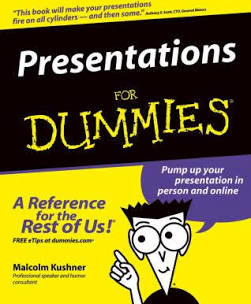How many times have you attended training where the trainer seemed nervous, skeptical, just going through the motions, or otherwise acting like they just didn’t want to be there? Perhaps there were attempts at self-deprecating humor, like referring to how much coffee the trainer would need to get through the training?
When we pause for reflection, we intuitively realize that trainer behavior like this cannot be good. An article by Dr. Brian Fitch for police trainers in the December 2010 FBI Law Enforcement Bulletin entitled “Attitudes and Performance: The Impact of Self-Fulfilling Prophecies” explains that multiple scientific studies confirm what our intuition tells us:
Hundreds of studies have demonstrated that, on average, educators’ assumptions do influence the actions and achievements of their pupils. If teachers anticipate that students will succeed, they usually do. On the other hand, when they expect learners to perform poorly, they often are not disappointed. In either case, pupils rise to the level of teacher expectations—either positive or negative. Generally speaking, trainers who anticipate more from students by setting higher standards, providing encouragement, and offering positive feedback inspire higher levels of performance than those who lack faith in the ability and motivation of their charges.
While the earliest studies began with school-age children, subsequent research has examined the role of instructor suppositions with salespeople, athletes, pilots, law enforcement officers, and military personnel. [Footnote omitted].
Perhaps the most instructive message in Dr. Fitch’s article is the emphasis on non-verbal communications from instructor:
Studies in communication and psychology have suggested that people rely on three channels to convey their emotions.
- Verbal (words and phrases)
- Paralanguage (tone, pitch, and volume)
- Nonverbal (facial expressions, eye contact, hand gestures, posture, and distance)
What is surprising, however, is the relatively minor role played by the spoken word in communicating emotion. In fact, communication studies have indicated that the majority of emotions, including how instructors truly feel about a student’s performance and potential, are communicated nonverbally. More specifically, fully 55 percent of the emotional impact of a communicator’s message is nonverbal, with 38 percent accounted for by paralanguage and only 7 percent explained by spoken words.
The apparent power of nonverbal communication reinforces the importance of sending consistent messages. When instructors say one thing but broadcast a different message nonverbally, they invariably undermine the credibility of their communication. For example, law enforcement firearms trainers can significantly undermine their effectiveness by telling students that anyone can shoot well while, at the same time, displaying subtle cues of frustration, such as exhaling deeply, looking disgusted, or speaking in a patronizing voice to recruits having trouble attaining a qualifying score.
Students, however, are surprisingly adept at picking up nonverbal cues, such as subtle changes in facial expression, eye contact, posture, or tone of voice. If instructors send mixed messages, learners invariably will pay greater attention to the nonverbal one, especially if it is negative. [Emphasis added, footnotes omitted]:
Fitch, “Attitudes and Performance: The Impact of Self-Fulfilling Prophecies“
Of course, these instructional principles apply just as well to standards of conduct training. If your body language and other cues send the message that the training will be boring and worthless, you are creating a self-fulfilling prophesy. You must make sure your nonverbal communications are not undermining your verbal training message.
Mere awareness of this potential trap should go a long way toward preventing the problem. In future Training Tips columns we will address methods for building confidence and other techniques that should further strengthen performance. In the meantime, we welcome your suggestions in the Comments section below.
Like this:
Like Loading...
